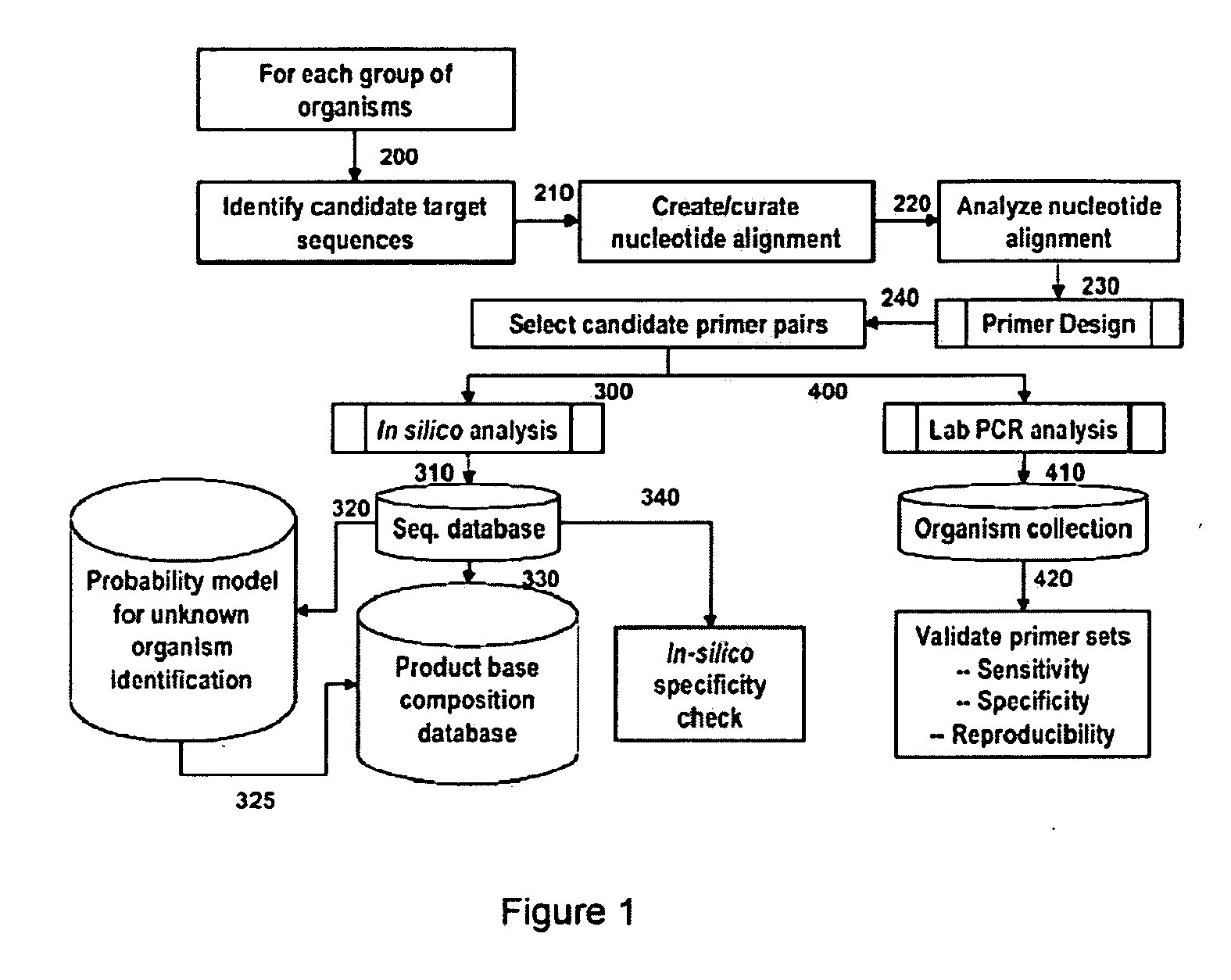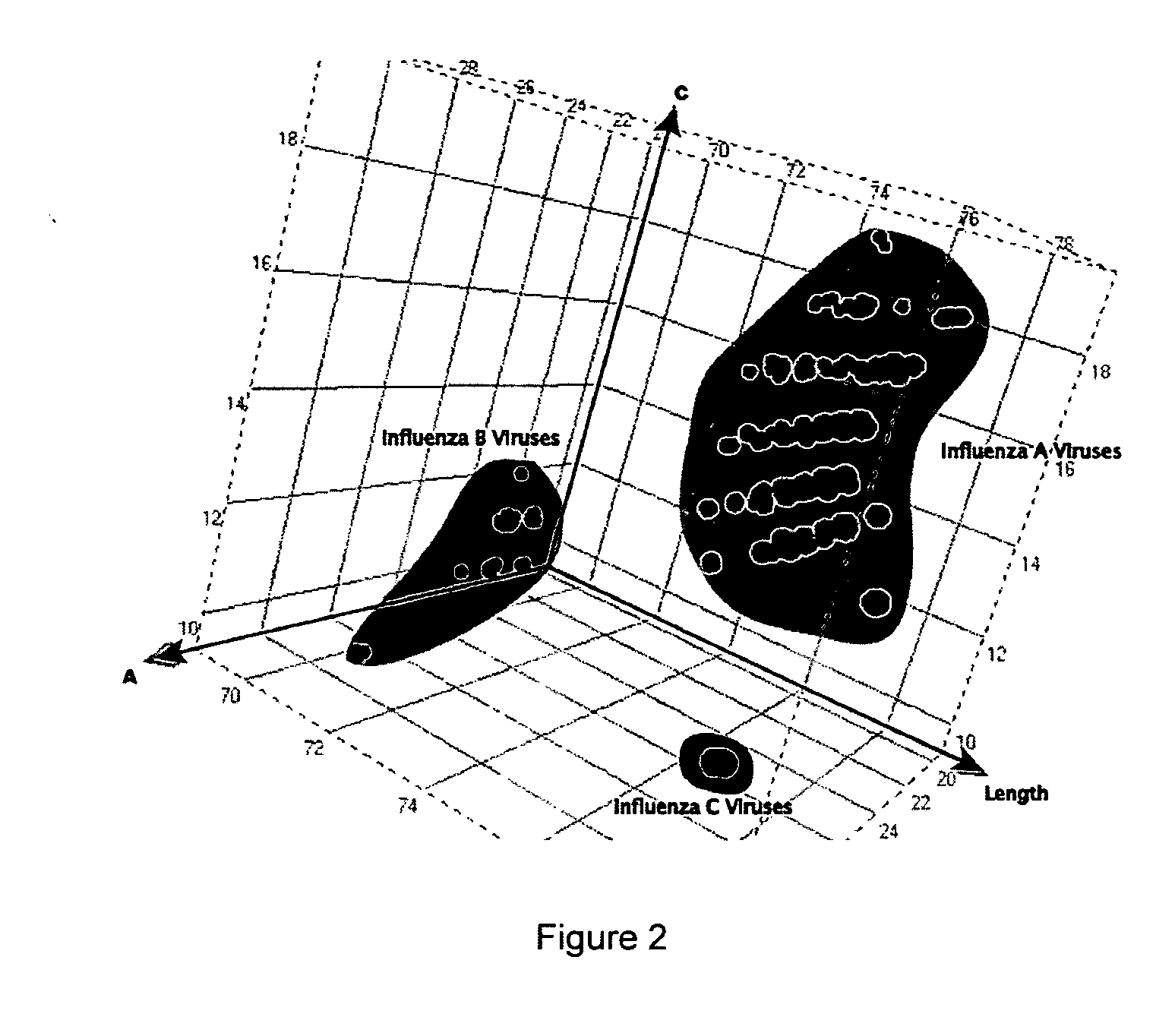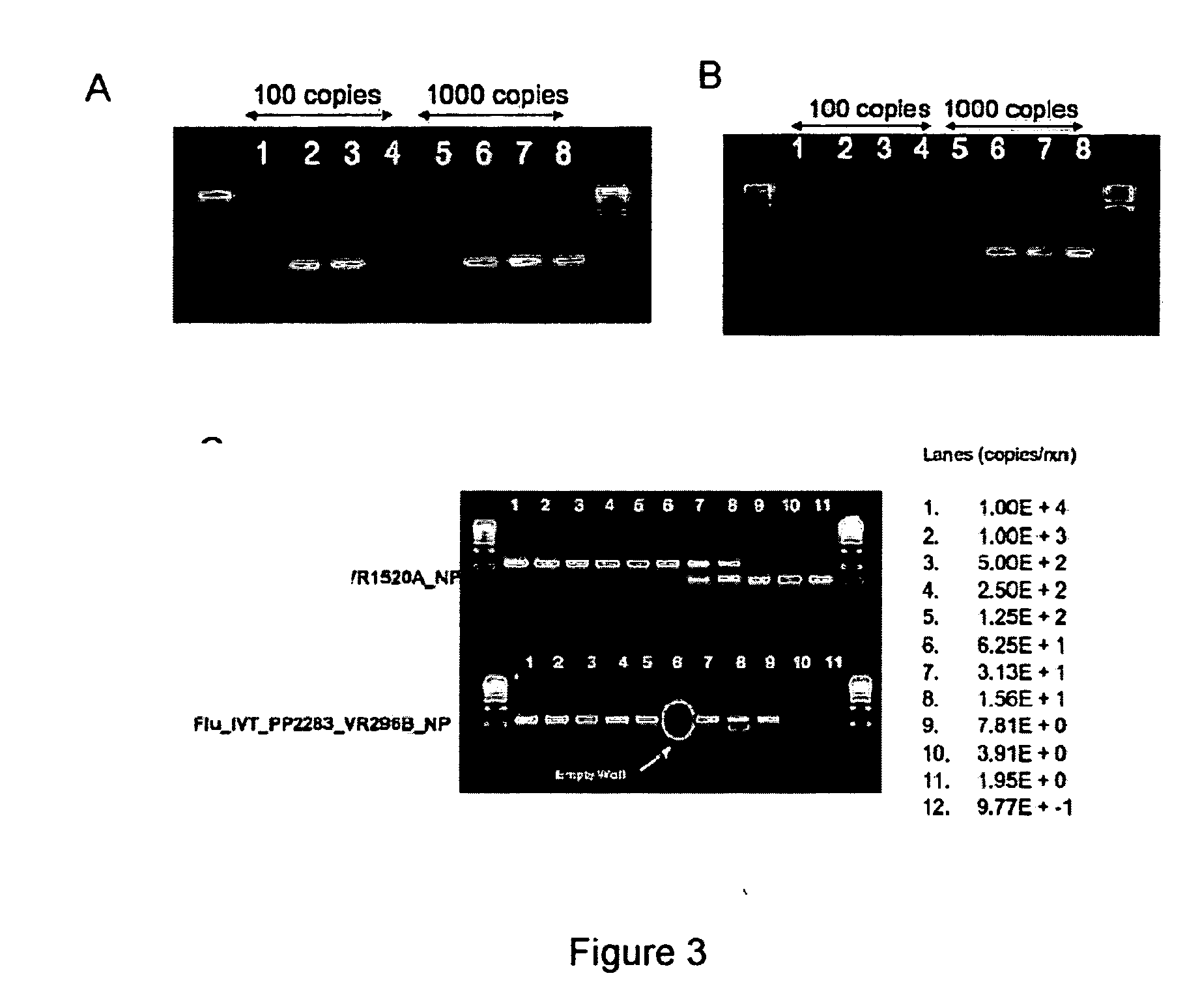Compositions for use in identification of influenza viruses
a technology for influenza viruses and compositions, applied in the field of genetic identification and quantification of influenza viruses, can solve the problems of pandemic, serious disease, and the most people have little or no protection against new viruses
- Summary
- Abstract
- Description
- Claims
- Application Information
AI Technical Summary
Benefits of technology
Problems solved by technology
Method used
Image
Examples
example 1
Selection of Design and Validation of Primers that Define Bioagent Identifying Amplicons for Influenza Viruses
[0099] For design of primers that define influenza virus identifying amplicons, a series of influenza virus genome segment sequences were obtained, aligned and scanned for regions where pairs of PCR primers would amplify products of about 45 to about 150 nucleotides in length and distinguish species (influenza viruses A, B and C) and / or individual strains from each other by their molecular masses or base compositions. A typical process shown in FIG. 1 is employed for this type of analysis.
[0100] A database of expected base compositions for each primer region was generated using an in silico PCR search algorithm, such as (ePCR). An existing RNA structure search algorithm (Macke et al., Nucl. Acids Res., 2001, 29, 4724-4735, which is incorporated herein by reference in its entirety) has been modified to include PCR parameters such as hybridization conditions, mismatches, and...
example 2
Sample Preparation and PCR
[0106] Samples were processed to obtain viral genomic material using a Qiagen QIAamp Virus BioRobot MDx Kit (Valencia, Calif. 91355). Resulting genomic material was amplified using an MJ Thermocycler Dyad unit (BioRad laboratories, Inc., Hercules, Calif. 94547) and the amplicons were characterized on a Bruker Daltonics MicroTOF instrument (Billerica, Mass. 01821). The resulting molecular mass measurements were converted to base compositions and were queried into a database having base compositins indexed with primer pairs and bioagents.
[0107] All PCR reactions were assembled in 50 .micor.L reaction volumes in a 96-well microtiter plate format using a Packard MPII liquid handling robotic platform (Perkin Elmer, Bostan, Mass. 02118) and M. J. Dyad thermocyclers (BioRad, Inc., Hercules, Calif. 94547). The PCR reaction mixture consisted of 4 units of Amplitaq Gold, 1× buffer II (Applied Biosystems, Foster City, Calif.), 1.5 mM MgCl.sub.2, 0.4 M betaine, 800 ....
example 3
Solution Capture Purification of PCR Products for Mass Spectrometry with Ion Exchange Resin-Magnetic Beads
[0108] For solution capture of nucleic acids with ion exchange resin linked to magnetic beads, 25 micor.l of a 2.5 mg / mL suspension of BioClone amine terminated supraparamagnetic beads (San Diego, Calif. 92126) were added to 25 to 50 .micro.l of a PCR (or RT-PCR) reaction containing approximately 10 pM of an amplicon. The above suspension was mixed for approximately 5 minutes by vortexing or pipetting, after which the liquid was removed after using a magnetic separator. The beads containing bound PCR amplicon were then washed three times with 50 mM ammonium bicarbonate / 50% MeOH or 100 mM ammonium bicarbonate / 50% MeOH, followed by three more washes with 50% MeOH. The bound PCR amplicon was eluted with a solution of 25 mM piperidine, 25 mM imidazole, 35% MeOH which included peptide calibration standards.
PUM
| Property | Measurement | Unit |
|---|---|---|
| molecular weight | aaaaa | aaaaa |
| molecular weights | aaaaa | aaaaa |
| temperature | aaaaa | aaaaa |
Abstract
Description
Claims
Application Information
 Login to View More
Login to View More - R&D
- Intellectual Property
- Life Sciences
- Materials
- Tech Scout
- Unparalleled Data Quality
- Higher Quality Content
- 60% Fewer Hallucinations
Browse by: Latest US Patents, China's latest patents, Technical Efficacy Thesaurus, Application Domain, Technology Topic, Popular Technical Reports.
© 2025 PatSnap. All rights reserved.Legal|Privacy policy|Modern Slavery Act Transparency Statement|Sitemap|About US| Contact US: help@patsnap.com



